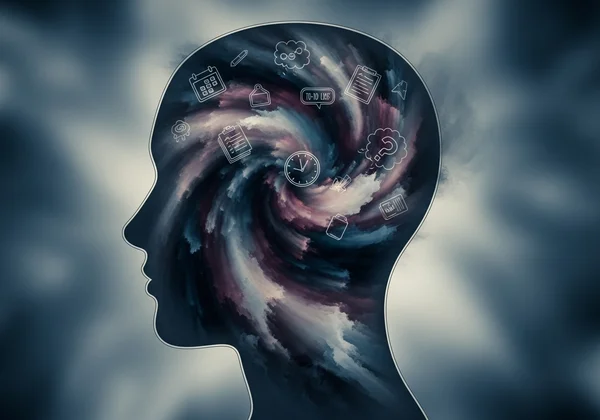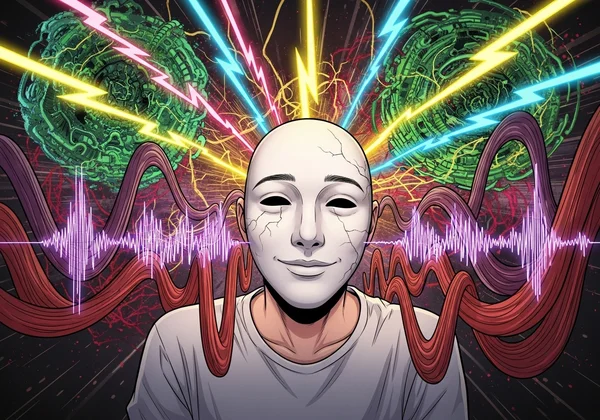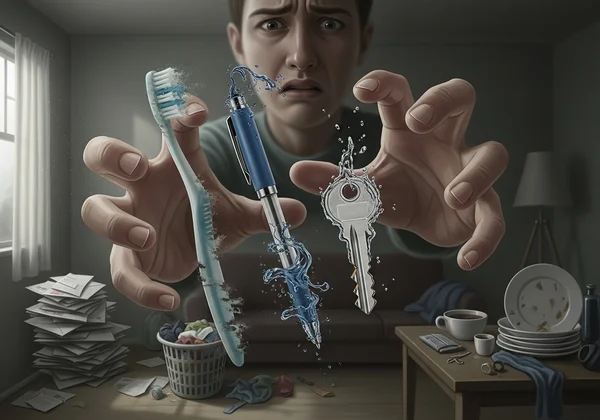Autistic Burnout: Signs, Symptoms & Recovery Guide | RAADS-R Test Insights
September 29, 2025 | By Elara Vance
Feeling constantly drained, overwhelmed, and losing abilities you once had? You might be experiencing autistic burnout, a profound state distinct from everyday stress or depression. This experience often results from the cumulative effect of navigating a world not designed for neurodivergent minds. It can feel isolating and confusing. Many describe this as hitting a wall, where skills once accessible suddenly feel out of reach. This guide will help you understand what autistic burnout is, how to recognize its signs and symptoms, and crucially, offer a compassionate path to recovery and renewed well-being. A great first step on this journey is gaining deeper self-knowledge. An online autism screening, such as the RAADS-R test, can provide valuable initial insights into the autism traits in adults that may contribute to this experience.
What is Autistic Burnout? Understanding This Unique Autistic Experience
Autistic burnout is a state of intense physical, mental, and emotional exhaustion. It is often accompanied by a loss of skills. It's the result of chronic life stress that has depleted an autistic person's resources. Unlike general burnout, which is often tied to work, autistic burnout stems from the constant effort of existing in a society that misunderstands or fails to accommodate neurodivergent needs. This includes the high energy cost of social masking, processing overwhelming sensory input, and managing executive function challenges daily. It is a state of overload where the brain and body can no longer keep up with the demands being placed upon them.

Autistic Burnout vs. General Burnout: Key Differences
Although both types of burnout involve exhaustion, key differences distinguish them. General burnout is usually work-related, and recovery often involves a break, such as a vacation or a job change. In contrast, autistic burnout is more pervasive. It affects all areas of life. The most significant difference is the loss of skills, where an autistic person may temporarily lose the ability to speak fluently, perform daily tasks, or manage social interactions they previously could. This regression is not a choice but a symptom of profound overload, a reality often illuminated for adults when they first take an autism test.
The Role of Masking and Sensory Overload in Triggering Burnout
Two major triggers of autistic burnout are masking and sensory overload. Masking, or "camouflaging," is the conscious or unconscious effort to suppress autistic traits (like stimming) and perform neurotypical social behaviors. This is incredibly draining and acts like running a complex software program in the background at all times. Simultaneously, sensory overload from bright lights, loud noises, strong smells, or crowded spaces constantly taxes the nervous system. The combination of these factors creates an energy deficit that, over time, leads to a complete system shutdown: burnout. Identifying these patterns is a key insight that can come from a detailed autism screening like the RAADS-R test.

Recognizing the Signs & Symptoms of Autistic Burnout
Recognizing autistic burnout is a crucial first step in recovery. Symptoms often begin subtly and escalate over time, affecting all areas of life. Recognizing these signs in yourself or a loved one can provide clarity and validation for an experience that is often invisible to others. For many, connecting these symptoms to their underlying neurotype through a tool like an adult autism test is a pivotal moment. This understanding, which can be explored with an online autism screening, is a cornerstone of recovery.
Emotional and Cognitive Exhaustion in Adult Autistic Burnout
This exhaustion is unlike typical tiredness. It goes beyond what sleep can fix. Cognitively, this manifests as intense "brain fog," difficulty concentrating, memory problems, and a reduced capacity for decision-making. Emotionally, it can lead to increased irritability, emotional numbness, or heightened sensitivity and more frequent meltdowns or shutdowns. The mind feels like it's wading through mud, making even simple tasks feel monumental.
Increased Social Withdrawal and Heightened Sensory Sensitivity
When in burnout, an autistic person's already limited social energy is completely depleted. Socializing becomes not just tiring but painful, leading to significant withdrawal from friends, family, and work. Parallel to this, sensory sensitivities become extreme. A light that was once annoying is now blindingly painful; a background noise that was ignorable is now deafening and overwhelming. This is the body's way of trying to reduce input to an already overloaded system.
Regression of Skills and Executive Dysfunction Challenges
One of the most distressing symptoms of autistic burnout is the loss of previously mastered skills. This can include a loss of verbal ability (going non-verbal or semi-verbal), a decline in the ability to cook or clean, or forgetting how to perform tasks at work. Executive functions—the brain's management system for planning, organizing, and initiating tasks—often collapse. This leads to profound difficulty with daily life management, creating a cycle where the inability to function causes more stress, deepening the burnout.

A Compassionate Path to Autistic Burnout Recovery
Recovery from autistic burnout isn’t about "pushing through." It’s about reducing demands radically and creating an environment that supports healing. This process requires patience, self-compassion, and a willingness to unlearn harmful societal expectations.
Prioritizing Radical Rest and Reducing Demands (Pacing Yourself)
The first and most critical step is rest. This means more than just sleeping; it means a drastic reduction in all forms of demand—cognitive, social, emotional, and sensory. This may involve taking time off work or school, canceling social plans, or using noise-canceling headphones. Giving yourself permission to rest without guilt is vital for healing. It's about letting your system come back offline at its own pace, not forcing it.

Re-evaluating Your Environment and Establishing Firm Boundaries
Recovery involves actively changing the conditions that led to burnout. This means identifying and minimizing sensory triggers in your home and workplace. It also requires learning to set and enforce firm boundaries. This could be saying "no" to social invitations, limiting contact with draining people, or communicating your needs for quiet and solitude clearly to others. It is an act of self-preservation.
Seeking Supportive Neurodiversity-Affirming Professional Guidance
Connecting with a therapist, coach, or support group that understands and affirms autistic experiences is invaluable. A neurodiversity-affirming professional will not try to "fix" your autism or encourage more masking. Instead, they will help you understand your unique neurology, develop strategies for managing energy and sensory needs, and support you in building a life that is authentic and sustainable.
Moving Forward After Autistic Burnout: Reclaiming Your Energy and Well-being
Autistic burnout is a severe and debilitating experience, but it is not a life sentence. It is a signal from your body and mind that your needs are not being met. By learning to recognize the signs, honor your limits, and create a life that accommodates your neurotype, you can recover and prevent future burnout. This journey is one of deep self-exploration and acceptance.
Understanding your autistic traits, which a comprehensive autism screening can help clarify, is foundational to this process. If you are seeking to better understand your own experiences and how they might relate to the autism spectrum, a structured self-assessment can provide invaluable clarity. Consider taking the next step in your journey of self-discovery. You can start your assessment today to gain personalized insights that can help illuminate your path forward.
Frequently Asked Questions About Autistic Burnout & Self-Reflection
Is autistic burnout a formal diagnosis listed in the DSM-5?
No, autistic burnout is not currently a formal clinical diagnosis in the DSM-5. However, it is a widely recognized and validated concept within the autistic community and among neurodiversity-affirming clinicians. Research is growing, and its legitimacy is built on the consistent, shared lived experiences of countless autistic individuals.
How does autistic burnout differ from depression or general work burnout?
While there can be overlapping symptoms like exhaustion and withdrawal, the core differences are key. Autistic burnout is uniquely characterized by a regression of skills and heightened sensory sensitivity. Unlike work burnout, it affects all areas of life, and unlike depression, its root cause is the chronic stress of navigating a neurotypical world, not necessarily a chemical imbalance.
Can the RAADS-R Test help identify traits contributing to burnout?
Absolutely. While the RAADS-R test is a screening tool and not a diagnostic instrument for burnout itself, it can be incredibly helpful. By taking the RAADS-R test online, you can identify autistic traits you may have across different domains, such as social relatedness or sensory interests. Understanding these traits can directly explain why you might be prone to burnout from masking or sensory overload, providing the "why" behind your exhaustion.
What are the immediate steps I should take if I suspect I have autistic burnout?
The most immediate and crucial step is to reduce demands. Start small: cancel one non-essential social plan, dim the lights in your room, put on noise-canceling headphones, and allow yourself to engage in activities that calm you (stimming) without judgment. Give yourself permission to rest radically, even if it feels unproductive.
How can the AI personalized report offer insights into my burnout experience?
The standard test results provide a score, but the optional AI personalized report offers a deeper, more contextualized understanding. By answering additional questions about your specific challenges and strengths, the AI can help connect the dots. For example, it might highlight how your high scores in sensory-motor domains, combined with your reported workplace environment, create a specific recipe for sensory-driven burnout, offering you targeted insights that a simple score cannot. This can gain deeper insights into your unique triggers.